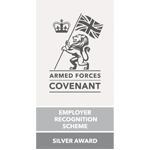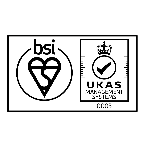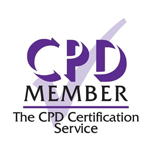LEEA offers technical advice as one of our key services.
Below is a selection of frequently asked questions (FAQs) received by our technical team.
Members can login to see a full list of FAQs.
Please Note:
The content of this guidance is provided for general information only.
Whilst it is intended to represent a standard of good practice, it has no legal status and compliance with it does not exempt you from compliance with any legal requirements.
If you require advice on your specific circumstances, please contact one of our advisors.
Although we make reasonable efforts to update the information in our guidance, we make no representations, warranties or guarantees, whether express or implied, that the content of our guidance is accurate, complete, or up-to-date.
Users of this document are to confirm that this is the most current version at the time of using this guidance. It is the responsibility of those with specific duties under the legislation to ensure that they fulfil the obligations imposed on them.
Have a technical question that is not listed below? Check the LEEA Library or email technicaladvice@leeaint.com to see if we can help.
Technical FAQs
General purpose wire rope, with one of those purposes intended for lifting, is within the scope of the Supply of Machinery (Safety) Regulations 2008 (SOMR) and Machinery Directive 2006/42/EC. Therefore the bulk supply or reel should be issued with the appropriate Declaration of Conformity documents and marking and a manufacturer’s certificate, as defined in the EN 12385 series of standards. Instructions for use are also required and will simply contain information as to the intended use, the limits of use and instructions for handling, cutting, storing, assembly, use and maintenance.
The distributor or user does not become a manufacturer in the sense of the supply legislation by cutting individual lengths for incorporation into lifting machinery or lifting accessories. Therefore the obligations set out above do not apply again to lengths of wire cut from products already placed on the market by the wire rope manufacturer. Such lengths are to be considered as components of the lifting machinery or the lifting accessories into which they are incorporated.
However distributors of wire ropes must ensure that the relevant declaration of conformity, the reference of the certificate setting out the characteristics of the wire rope and the manufacturer’s instructions, are supplied with the cut length of wire rope to the manufacturers of lifting machinery or lifting accessories or to users.
The above is also true of cut lengths of other lifting media, such as chain or webbing.
Click here to download FAQ.
Based on standards and legisaltion, LEEA requires the competent person to be sufficiently independent and impartial to allow objective decisions to be made. With this in mind the question should really be, ‘can you check your own work?’ It is LEEA’s view that the answer to this question would depend on the complexity of the thorough examination.
For example the thorough examination of a mechanically assembled chain sling following a repair is not a complicated task for a competent person to ascertain whether or not it has been assembled correctly. Whereas a thorough examination of a hoist following an overhaul of the lifting and braking mechanism is.
Therefore the duty holder or the employer of persons doing the thorough examination should assess the risks in terms of complexity of the maintenance and subsequent thorough examination. The risk assessment should consider whether or not the examiner could be considered as being impartial bearing in mind that the examiner is likely to assume that they have done a great job and as a result perhaps not be as thorough as they ought to be. Sometimes a second pair of eyes will be better placed to act impartial and see defects associated with the maintenance.
Note, human error is the root cause of a significant proportion of incidents.
It is also important to note the BS 7121-2 series of standards state, ‘it is essential that the person that does the thorough examination is not the same person that did the maintenance. Therefore with cranes in the UK it would perhaps be advisable to follow the guidance given in the standard’
Click here to download FAQ.
The answer to this is that they are all correct and the choice of which to use is really dependant on the use of the equipment, as the following information will explain.
The working load limit, or maximum working load as defined in the Supply legislation, is the load value assigned to the ‘maximum’ safe working load under ideal conditions and in most cases the working load limit and the safe working load will be the same. However, depending upon the conditions of use, it may be necessary for the competent person to reduce this to a lower safe working value and it is in these cases that the working load limit and safe working load will differ.
The rated capacity is the same as working load limit and is a term used for some cranes where the rating varies with configuration.
Click here to download FAQ.
Use legislation uses the term ‘lifting equipment’ to describe work equipment for lifting or lowering loads and includes its attachments used for anchoring, fixing or supporting it. However this is not true with regards to the supply legislation and associated harmonised standards.
To this end the specific documentation would depend on the type of lifting equipment being supplied. Therefore to answer this question for generic forms of lifting equipment, LEEA has produced best practice guidance which specifies the specific documentation required.
The guidance documents can be downloaded for free from the LEEA Library - https://leeaint.com/documents
Note that regulation 10 of PUWER requires every employer to ensure that an item of work equipment conforms at all times with any essential requirements. The only evidence the employer can have to fulfil this requirement is to obtain and accept the correct documentation.
Click here to download FAQ.
LEEA has many members with a wide range of products and services on offer.
You can search our members by location here - https://leeaint.com/find-a-member-near-me
Click here to download FAQ.
Supply legislation does not require a manufacturer of lifting equipment to give it a unique identification. It simply requires them to mark one on the product if they have specified one.
Use legislation on the other hand requires the duty holder to have lifting equipment Inspected and/or thoroughly examined and issued with a report inpsection or thorough examination. This report must identify the equipment without ambiguity so that defects can be remedied efficiently.
In the case where a duty holder has many items of a similar generic form of lifting equipment it is considered best practice to give each piece its own unique identification number, which is then recorded on each thorough examination report, thus ensuring the report is traceable to the equipment without ambiguity.
However, it is important to note that there are other methods of ensuring that the equipment on a report can be identified correctly, such as location for single items, or colour coding for multiple items grouped in a specific area.
Click here to download FAQ.




